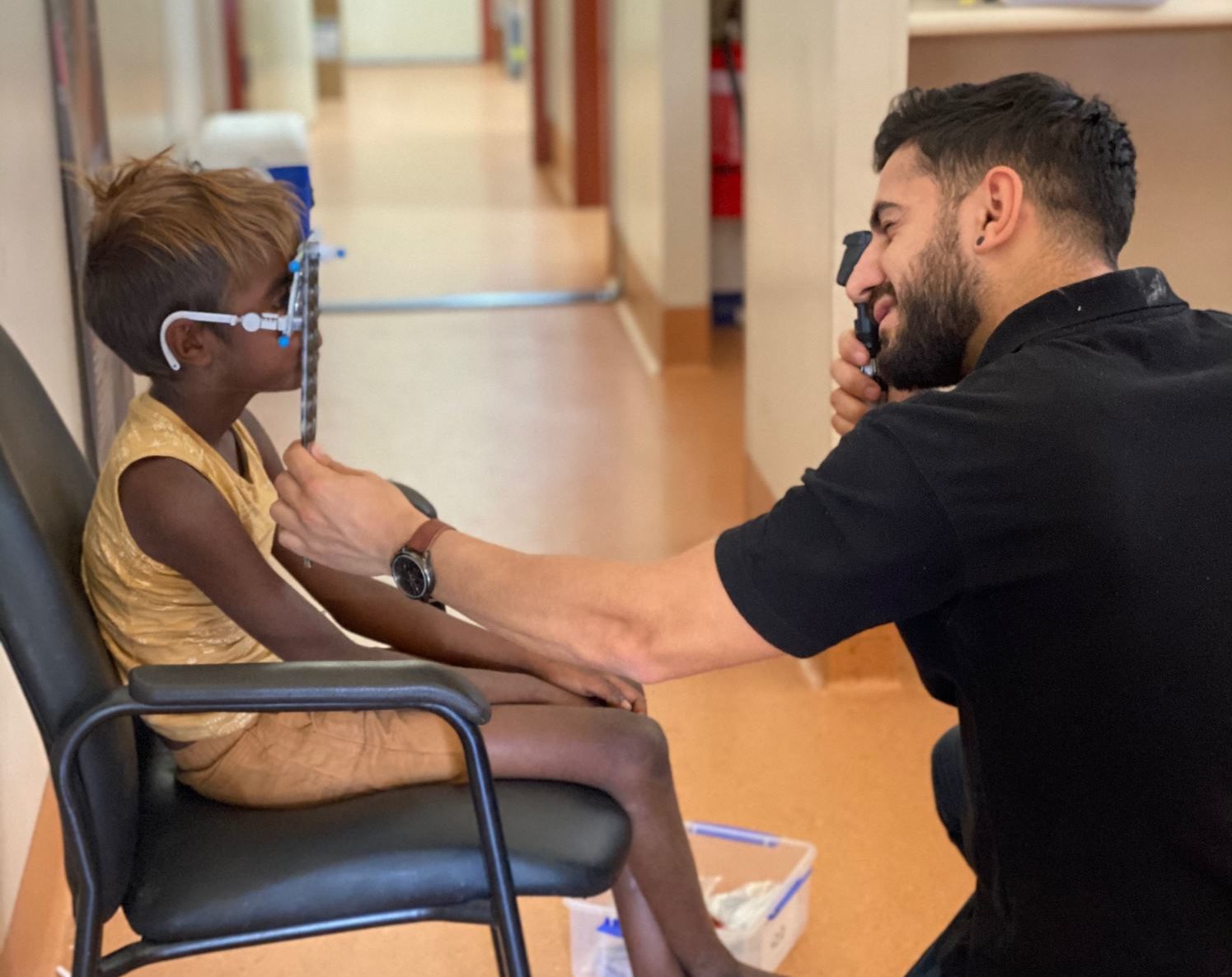
José Estevez’s mission to improve Aboriginal and Torres Strait Islander eye health takes him across a practice area so vast he needs to access it by light plane or 4WD.
Ever since graduating from Flinders University, optometrist José Estevez (BMedSc(VisSc), MOpt ’16) has been working on improving Aboriginal and Torres Strait Islander eye health, giving him a practice area so vast he needs to access it by light plane or 4WD.
His first role was a joint position between Flinders Ophthalmology and the South Australian Health and Medical Research Institute (SAHMRI).
‘That was a research position, but I was still doing clinical optometry work and visiting pretty much every remote Aboriginal community in South Australia,’ he says.
Now completing his PhD, he has just returned from his latest trip to the remote Anangu Pitjantjatjara Yankunytjatjara (APY) lands – 103,000 square kilometres of Aboriginal-titled country in the far northwest of the state.
Originally from Cuba, José became interested in Indigenous Australia at high school in Mount Gambier where he had Aboriginal friends.
‘But I guess my first exposure to Aboriginal health was when I was lucky enough to do some rural placements in Port Augusta and Port Lincoln. It was there I started to understand more.’
Aboriginal and Torres Strait Islander eye health has a troubling history. Blindness and vision impairment is around three times more prevalent in Indigenous populations than non-Indigenous – actually an improvement on the 2008 figures – where blindness was six times more prevalent.
There are three main conditions that affect the Indigenous population, two of them common enough among the whole population – the need for glasses, and cataract surgery.
But the third, diabetic retinopathy – the damage to blood vessels in the retina caused by diabetes – is a disease which affects up to 40% of Aboriginal adults with diabetes.
It is also a big contributor to cataracts, particularly at a younger age.
While glasses and cataract surgery can improve sight more or less instantly, retinopathy treatments are more complex.
‘It is entirely preventable, but once it has moved into the severe stages, it’s difficult to reverse, if at all,’ says José.
The solution is regular screening but that is not always easy in the vast remoteness of some Australian regions. José says the way to tackle it is by making community health centres more self-sufficient.
He is on a research team with researchers from Flinders University, SAHMRI, Alice Springs Hospital and SA Health. They have a grant from the Medical Research Futures Fund to create a community-led model of eye care for Indigenous Australians to prevent diabetic retinopathy.
‘It has a really strong reach from a clinic right here in Adelaide all the way to Central Australia. At the end of the day, the research will actually be led by the Aboriginal community controlled health services. But the way we implement an overall plan will be co-produced together.
‘If communities and health services can drive their own eye health care and rely less on fly-in fly-out models, then we will go a long way to prevent a lot of blindness.’
From the 2021 College of Medicine and Public Health Alumni Magazine – Read more
Find out more about studying Vision Science/Optometry at Flinders

